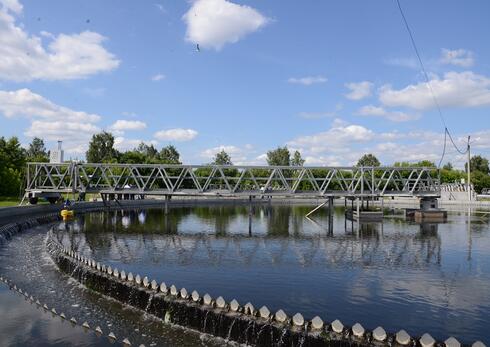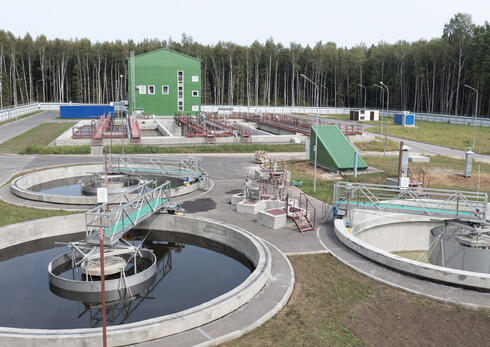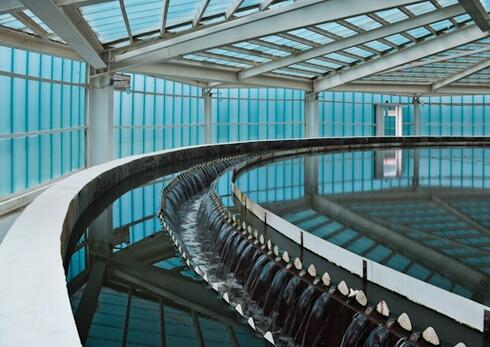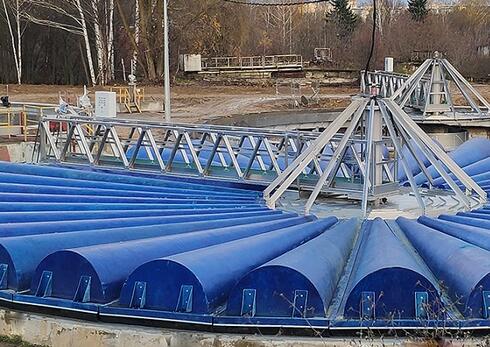Radial-flow sedimentation tank equipment
Sedimentation tanks at sewage treatment facilities are used for clarification and separation of two phases of substances for each other (sludge and water). Depending on the location, three types of sedimentation tanks are distinguished: primary (prior to biological treatment), secondary (after biological treatment) and tertiary sedimentation tanks (after the second stage of biological treatment or post-treatment). Sewage treatment facilities also use sludge compactors for gravitational accumulation of sediment.
Most of the sedimentation tanks work as follows: the wastewater flows through the central bowl and, spreading over the surface limited by the guide cylinder, moves from below upwards (under the wall of the cylinder) and further from the center to the peripheral trough of the sedimentation tank. During the movement, the water velocity decreases, the suspended substances fall down and the lighter parts go up to the surface. The sediment formed as a result of settling wastewater in sedimentation tanks is raked into the sedimentary zone by wings of a sludge scraper (in primary sedimentation tanks) or a sludge exhauster (secondary and tertiary sedimentation tanks). A semi-submerged board prevents floating substances from entering the clarified water draining trough. Floating substances from the water surface are collected by a skimmer.
The sludge compactors, in contrast to other sedimentation tanks, use special frame or rod mixers that mix the entire volume of liquid, and not just its bottom part.




